Help wanted: Oceanographer
Gerhard Behrens |
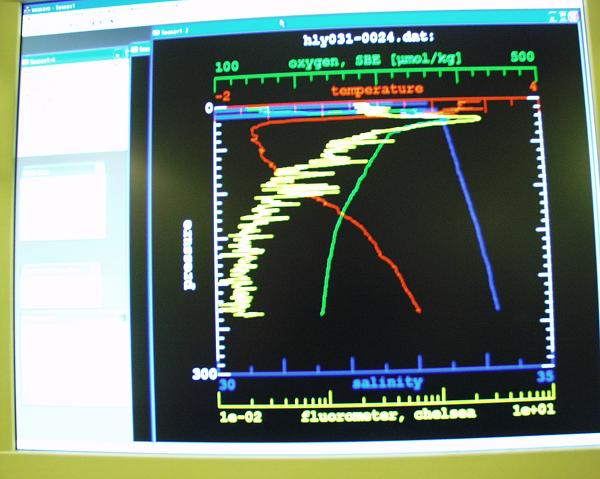
Chemical Oceanographers watch a monitor that shows the salt, temperature, and oxygen of a cast for water samples. |
Yesterday, the ship was geared up for all kinds of action: take more water samples, put in another mooring, get ready for a coring, think about another clam site. Last night, the wind blew in at 40-50 knots and whipped up some choppy waves. Now, none of that is happening due to some rough seas. But I still thought about how much has happened on the ship, and how many ways there is to be involved in oceanography. |
| Check out these VERY short job descriptions: |
| Chemical Oceanography: These scientists are looking at the chemicals of the ocean to understand its secrets: salt, temperature, gases such as oxygen and carbon dioxide, nutrients such as phosphate, metals such as cadmium and barium. |
| Physical Oceanography: This is about physics; the forces in action that affect the water: how water flows, ocean currents, spin of the earth, air pressure, changes in ocean temperature and salt levels. |
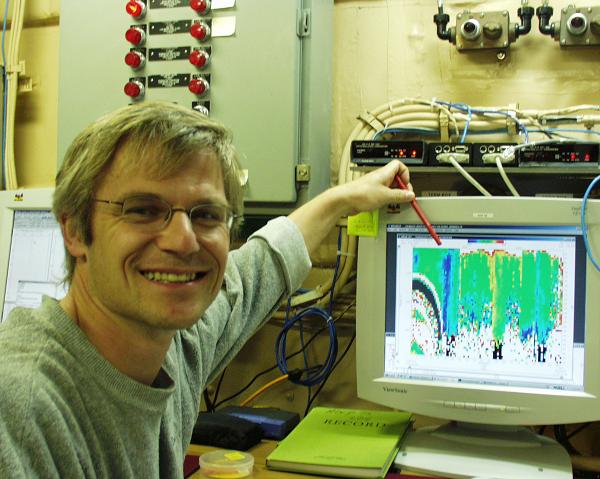
Physical Oceanographer, Andreas Meunchow, checks data on depth, current, and salinity. |
| Marine Geology and Geophysics: This oceanographer looks at the earth below the water, studying the rocks, minerals, mud, layering, and fossils. |
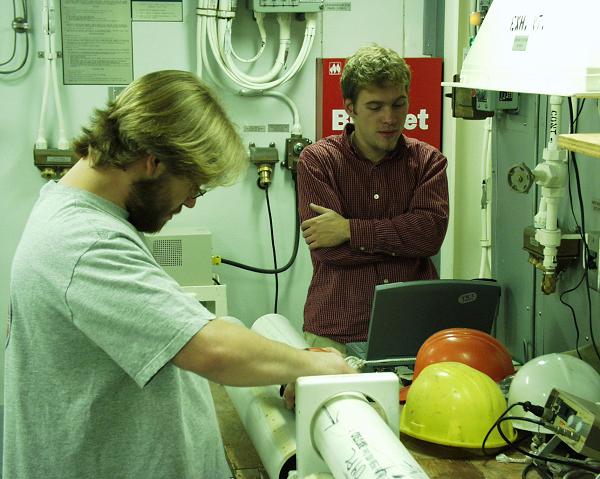
Chip Heil, a student in Geographical Oceanography, checks his coring sample for magnetic susceptibility. (How magnetic is the mud from the ocean floor?) |
| Biological Oceanography: This is the most famous kind, but itís only one kind! You would study the plants and animals of the sea if you were in this field, and your title might include zoology or botany. |
| A person canít just be one kind of oceanographer. Each one of those oceanographers has to know a lot about the other kinds because oceanographers often work together to answer the questions they have about how the ocean is behaving. |
| You can also work in oceanography with a slightly different twist. These people help the scientists collect and share their information and samples. |
| Analytical Technician: These workers are doing things with the water to find out about its chemistry. They mix chemicals with seawater and they use very special machines to discover what is in the very plain looking water. They have to be very careful about what they mix and how they mix, and they must understand how to use very complicated machines. |
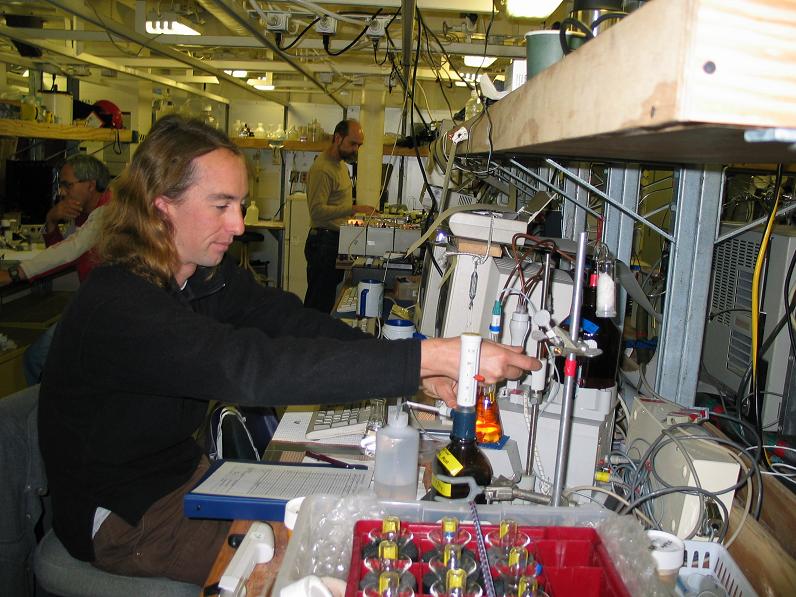
Dale Hubbard finds out how about the oxygen in these samples. Joe Jennings, in the rear, is looking for nutrients. |
| Mooring Technician: These folks put ocean-measuring equipment in the water. Thatís easy for me to write and very hard to do. |
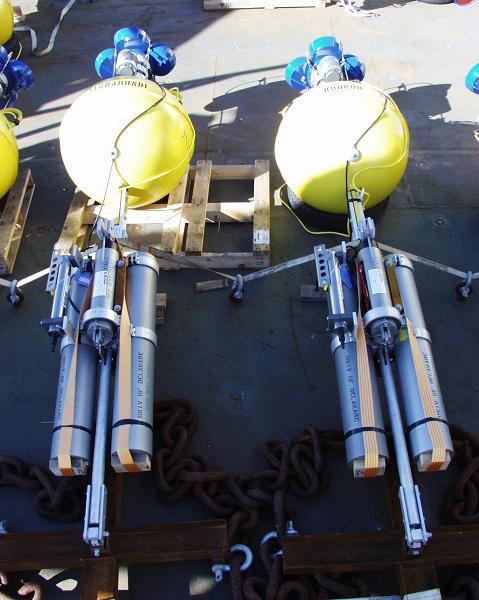
Mooring technicians work with scientists to design, build, and set out ocean measuring tools like this one to measure ocean pressure in shallow depths. |
| Coring Technician: This is also easy to write and hard to do: these workers get samples of the earth below the ocean floor.
The mooring techs and coring techs must have a wide range of skills: electrical engineer, electrician, mechanical engineer, mechanic, blacksmith, welder, heavy equipment operator, and most important, inventor and problem solver. |
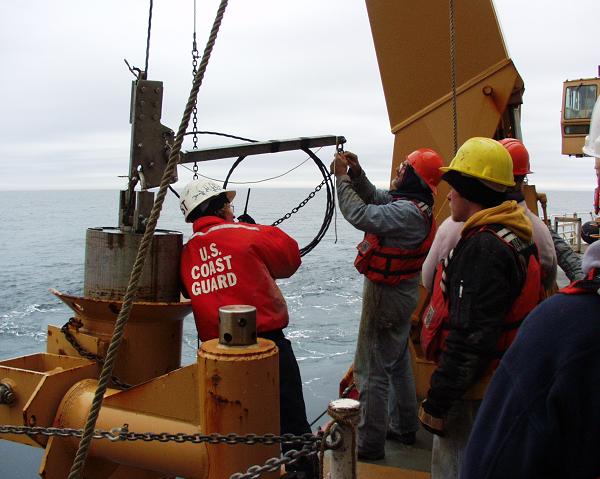
Coring technicians handle the heavy equipment that goes down for a sample of the oceanís bottom. |
| Marine Resource Management: People in this field want to teach others about the ocean: its water, its plants, and its animals; especially how to best use and protect the oceanís gifts. |
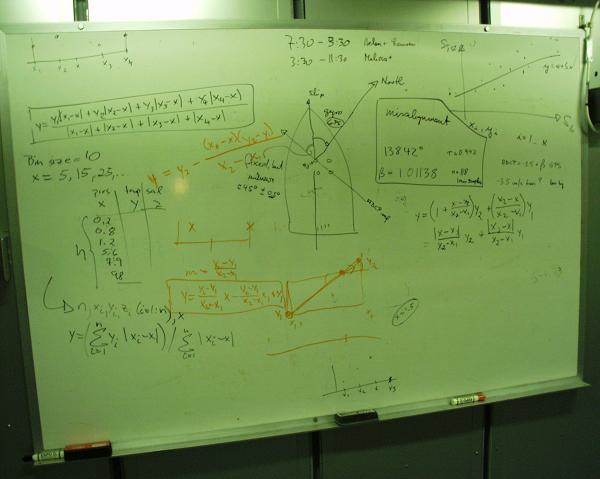
You need some math skills! |
| There are lots of other people making this cruise possible. Meteorologists help oceanographers plan for the weather. Cartographers provide detailed maps of the ocean floor. To prepare for work in oceanography, a student has a wide choice of subjects to choose from. On this cruise, science team members have studied many different things: physics, chemistry, material sciences, music, and even fine arts. But, everyone shares a love of the ocean and how it works. |
